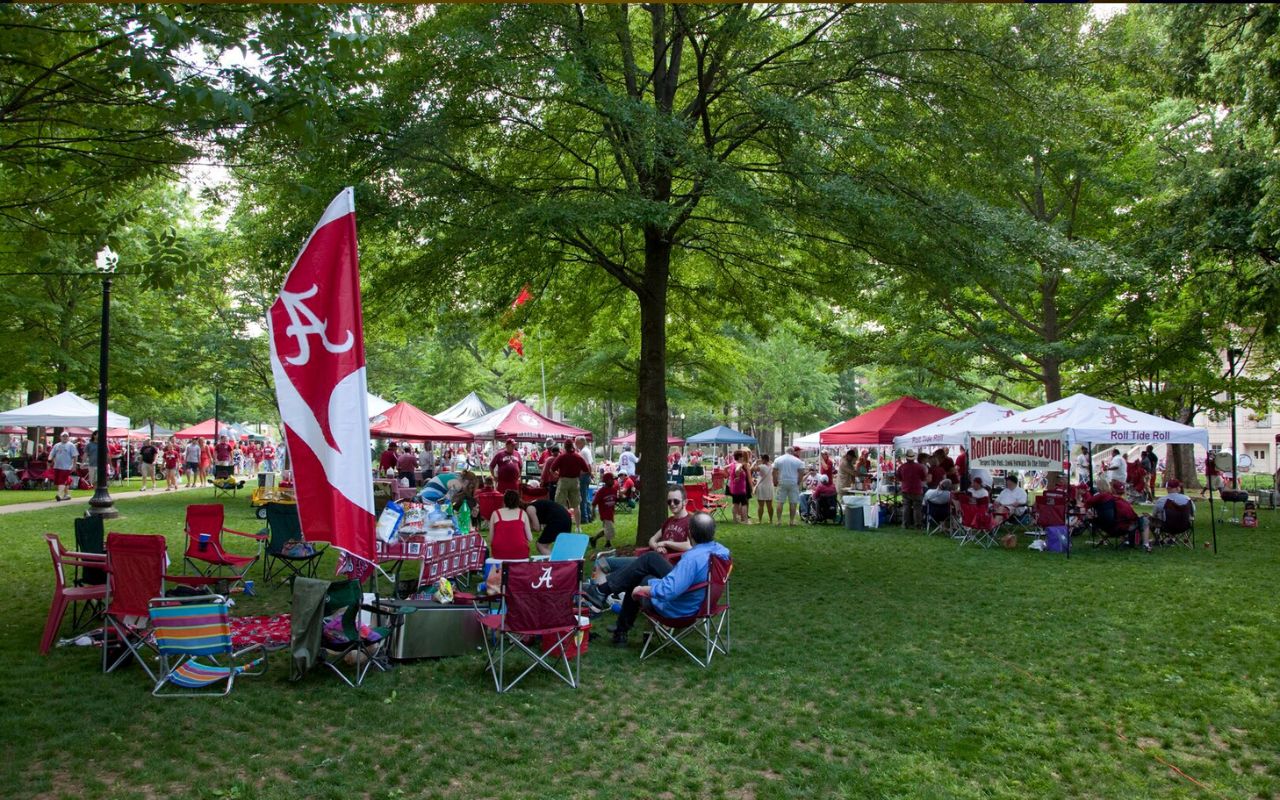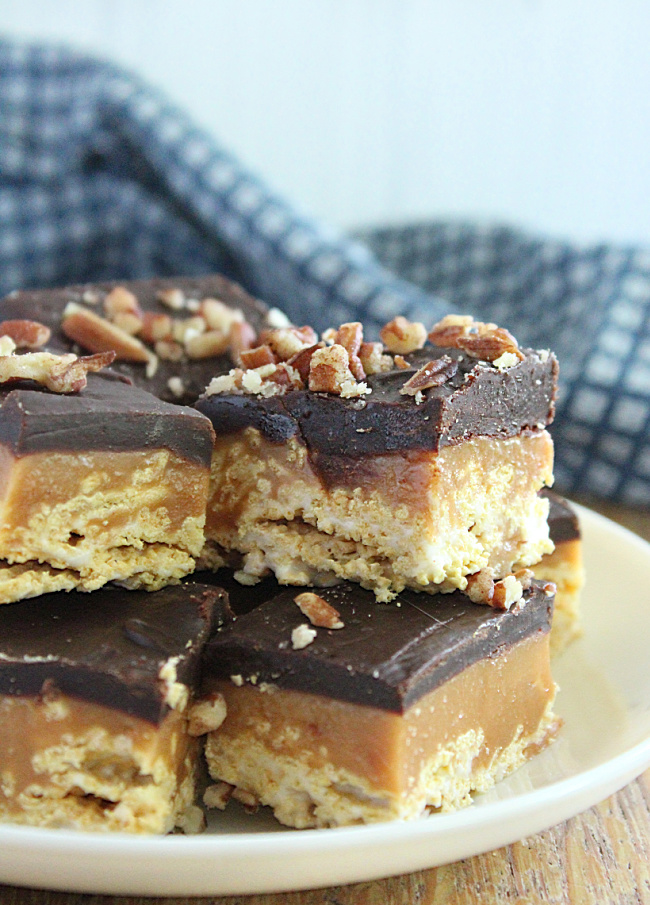13 Street Foods Anthony Bourdain Loved And Where To Find Them
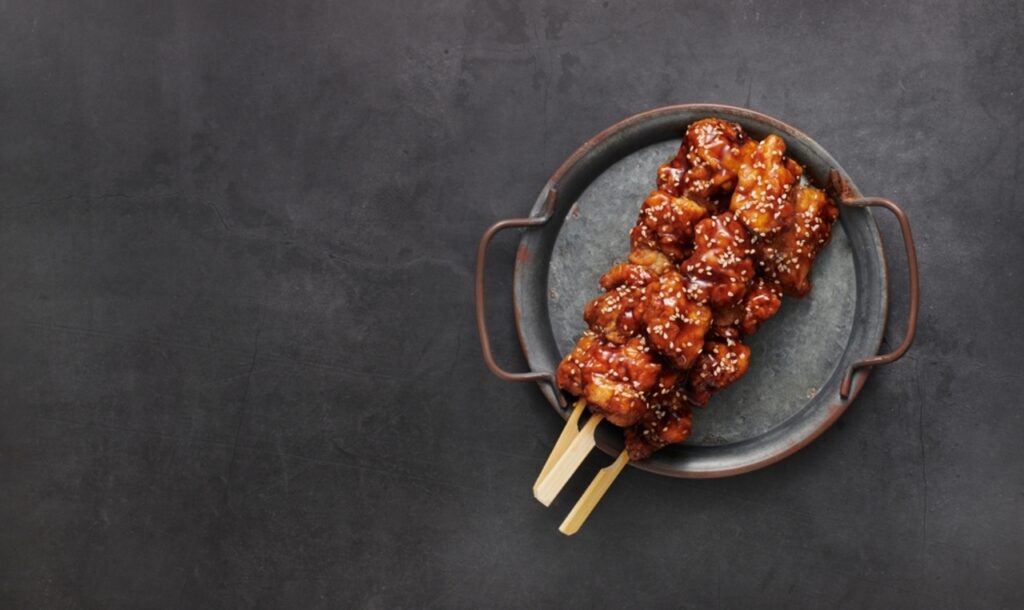
Anthony Bourdain had a gift for finding the heart of a city through its street food. He believed that the best dishes weren’t hidden in fine dining rooms but in crowded markets, roadside stalls, and late-night counters where locals gathered. Each bite told a story of history, culture, and community, and Bourdain treated these humble plates with the same reverence as a Michelin-starred meal. From smoky jerk chicken in Jamaica to steaming bowls of phở in Hanoi, his favorites reveal the true soul of global cuisine.
1. Bún ốc (Snail Vermicelli Soup), Hanoi
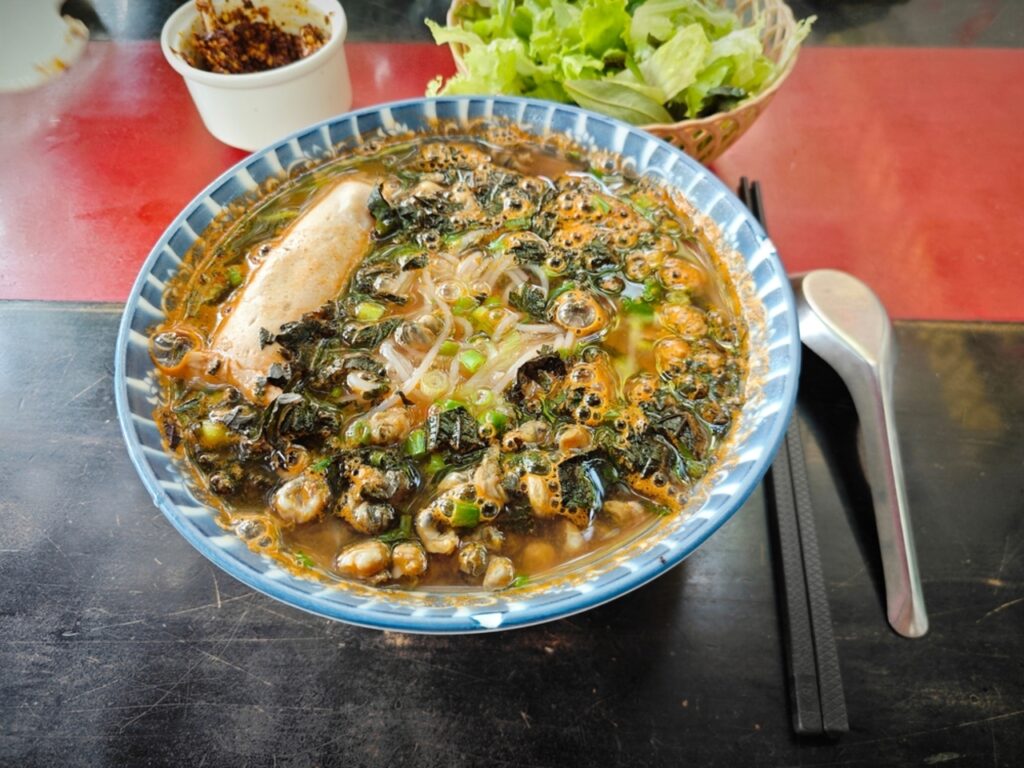
Bún ốc is a bowl that feels like Hanoi in a spoon: bright tomato broth, slippery rice vermicelli, fragrant herbs, and little snails that give the soup a briny chew. It’s built on slow-simmered bones and tomatoes, then finished with fresh herbs and a splash of vinegar or lime to snap the flavors. Locals eat it from street carts or small shops around Hoan Kiem and the Old Quarter, where freshness determines everything. When Bourdain filmed here, he chose spots famous for their snail bowls because the contrast of sweet, tart, and ocean note is so distinctive.
2. Kuching-style Laksa, Sarawak, Borneo
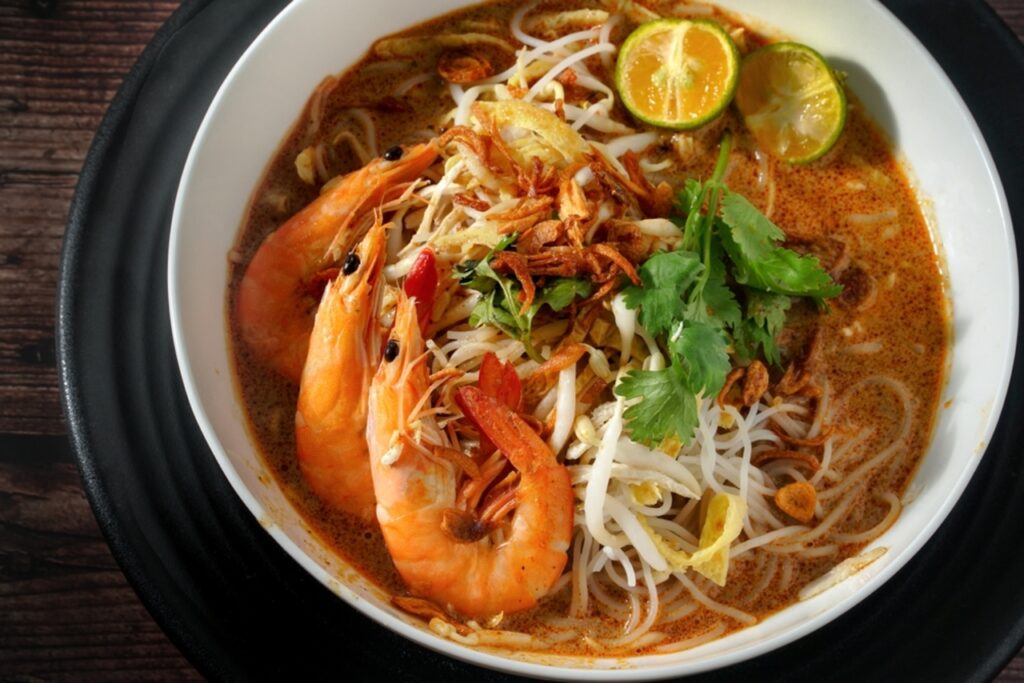
Kuching-style laksa is a regional revelation: a coconut-forward, turmeric-bright broth layered with shrimp, fish paste, and aromatics that build heat without drowning nuance. It’s oilier and more fragrant than many Southeast Asian soups, with shredded fish or prawns and a citrusy finish that cuts through the richness. Bourdain singled out Sarawak’s version for its balance and local character a dish that tastes like place and history. You’ll find it in street stalls and kopitiams across Kuching, where every bowl reflects family recipes.
3. Seafood Tostadas, Ensenada, Mexico
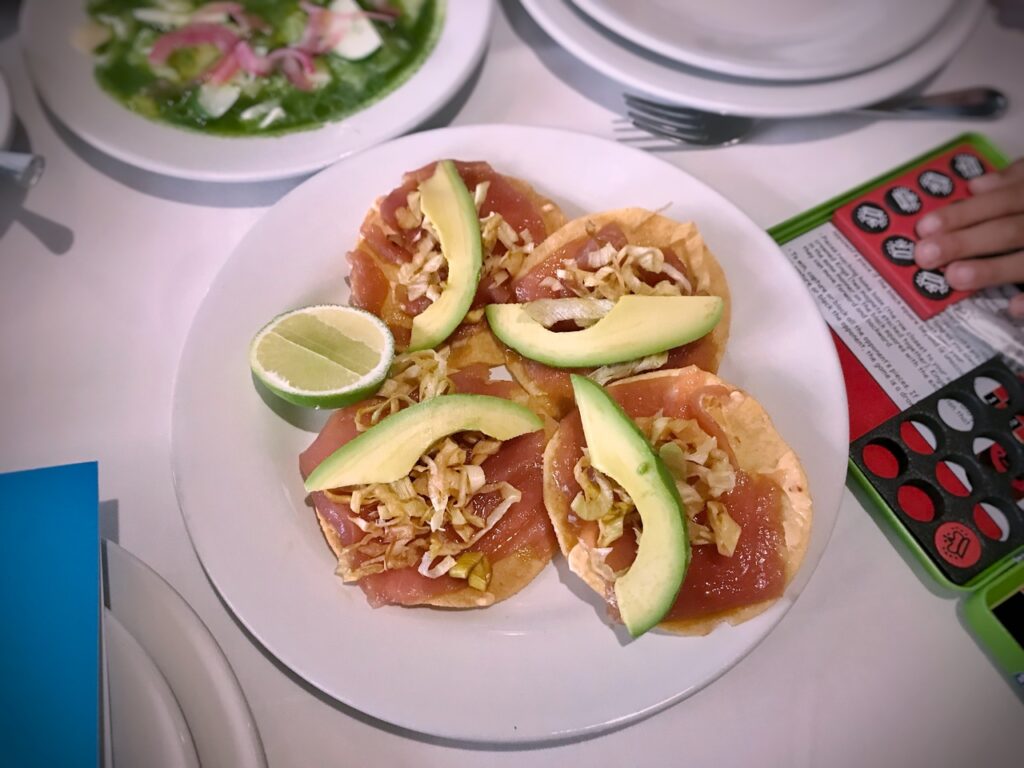
At La Guerrerense in Ensenada, a simple tostada becomes seafood theater: fresh ceviche-style toppings, uni or clams when available, bright citrus, and chile heat on a crisp tortilla. The vendor’s mastery is in sourcing the ocean close to the counter and finishing each tostada with house sauces and pickles that lift the shellfish. Bourdain praised these as street food bordering on fine dining, immediate, fresh, and unapologetically briny. If you go, expect tight lines and seasonal toppings that change by the catch.
4. Tamago Sando (Egg Salad Sandwich), Japan

Don’t underestimate Japan’s packaged egg salad sandwiches – they are precision comfort. Crustless, pillowy white bread holds a creamy, gently seasoned egg filling that’s refrigerated and sold to-go at convenience stores. Bourdain loved the surprising refinement of these humble items, highlighting how careful technique and simple ingredients can elevate a snack into an obsession. Look for them at Lawson and other konbini chains across Tokyo; they’re cheap, addictive, and oddly perfect after a long night of wandering.
5. Sisig, Manila, Philippines
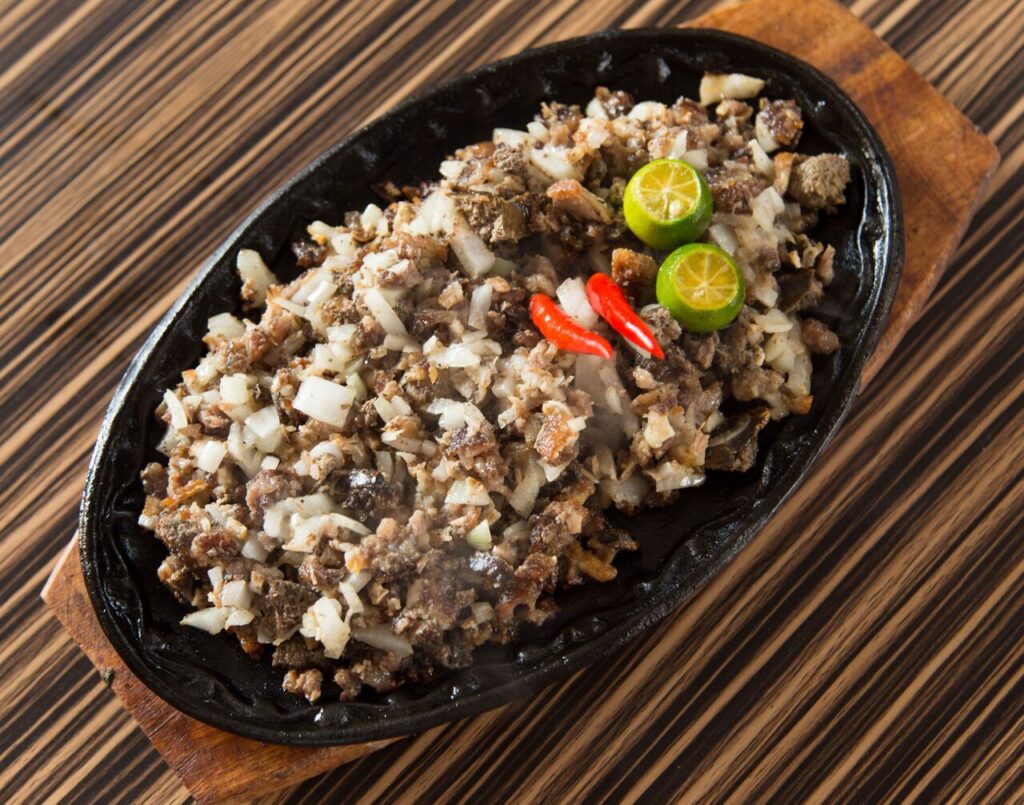
Sisig is the kind of dish that turns thrift into brilliance: chopped pig’s face and ears seared until crunchy, brightened with vinegar, onion, and calamansi, and often finished with a runny egg. Its texture is what sells it crunchy edges and tender fat, and its flavor profile is salty, sour, and slightly spicy. Bourdain admired sisig for being honest and immediate, a late-night plate for beer and conversation. Street stalls and small eclectic restaurants in Malate and Quezon City still serve the most celebrated versions.
6. Yakitori, Japan
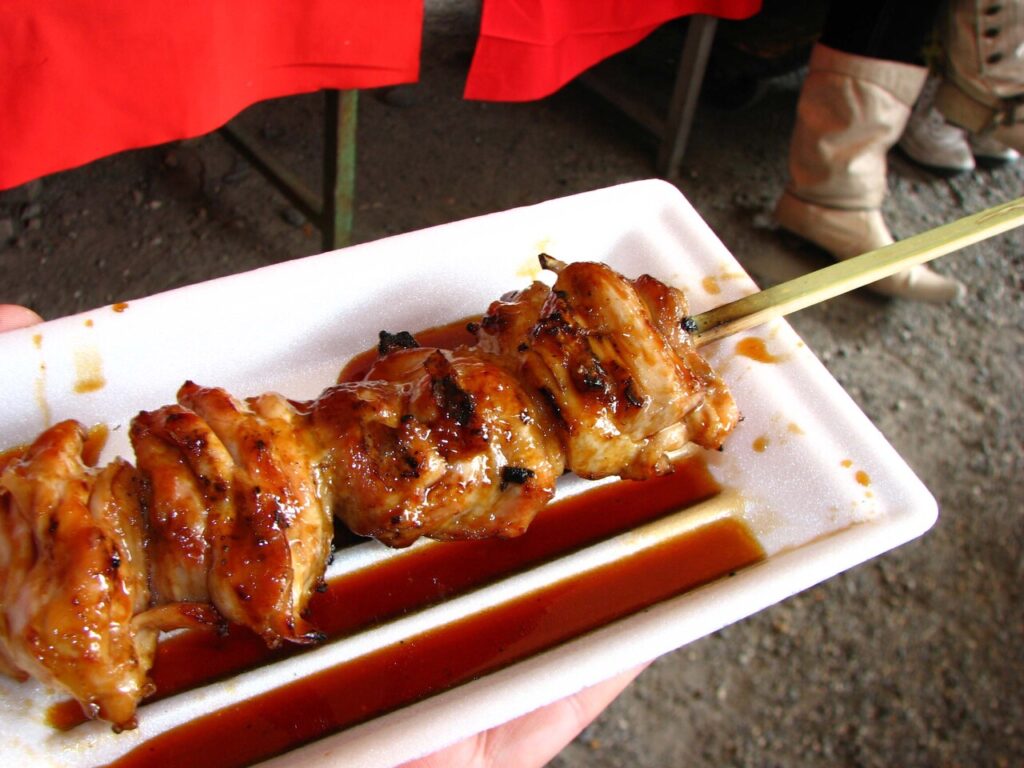
Yakitori is grill simplicity at its best: skewered chicken parts seasoned with salt or tare sauce and cooked over binchotan or charcoal to produce smoky, savory bites. The glamour is in the parts you rarely see in the West – heart, liver, cartilage – each one treated with precision. Bourdain praised intimate yakitori counters where chefs work the grill like musicians, serving consecutive skewers to standing patrons. Seek small izakayas or specialist shops in Tokyo neighborhoods for the authentic, late-night yakitori rhythm.
7. Phở, Vietnam
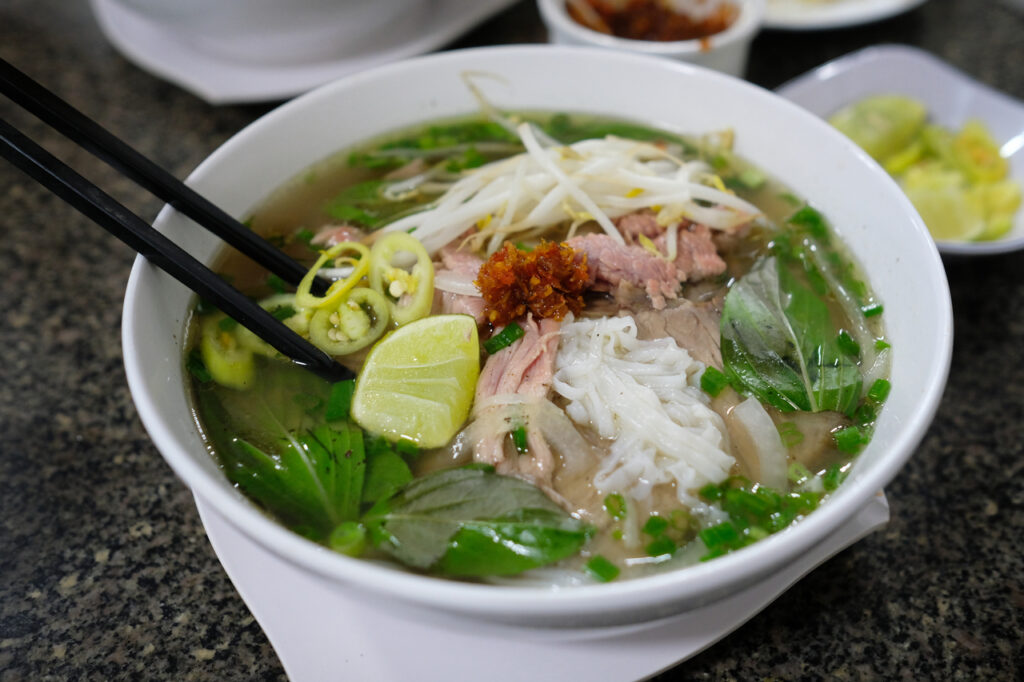
Phở is both ritual and comfort: a clear, aromatic bone broth infused with star anise, cinnamon, charred ginger, and long-simmered beef bones, ladled over rice noodles and slices of meat. It’s the dish that shaped modern Vietnamese street cuisine, eaten at dawn and late into the night. Bourdain celebrated Hanoi and Saigon phở for their regional differences and soulful broths, often pointing out that an excellent bowl depends on the patience of the stock and the balance of aromatics rather than gimmicks. Streetside stalls still deliver the truest bowls.
8. Bún bò Huế, Huế, Vietnam
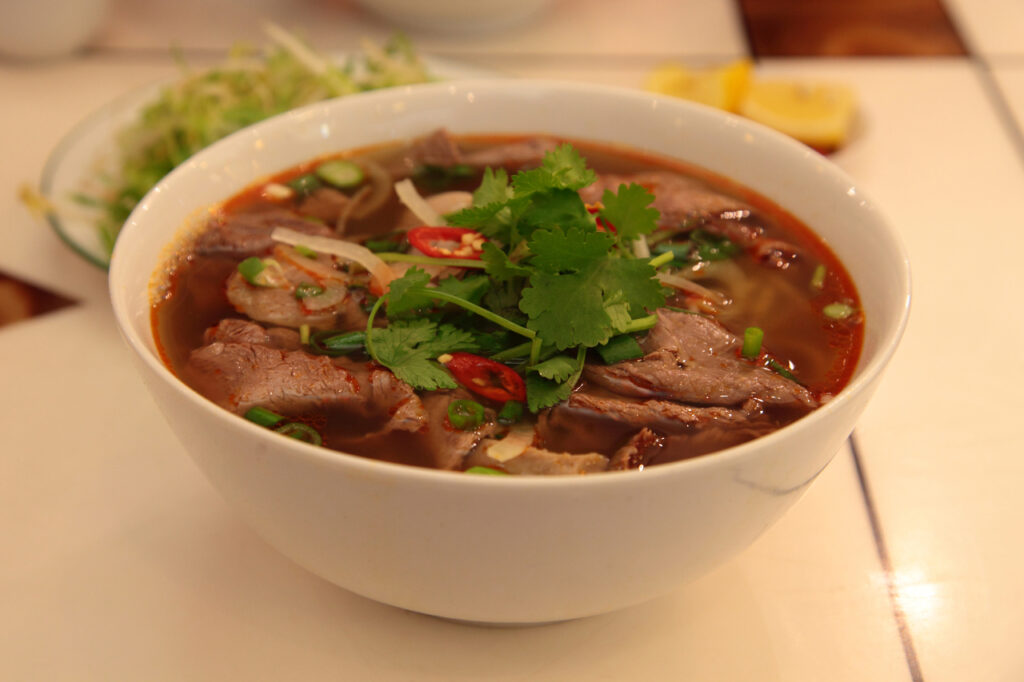
Bún bò Huế is bold, muscular, and aromatic lemongrass-forward, spiked with shrimp paste and often studded with pork hock or blood cake. Bourdain called it one of the greatest soups, praising its complexity and heat. Unlike gentler phở, this central-Vietnamese specialty delights in layers: rich broth, thicker noodles, and a pleasant assault of umami and spice. The best bowls come from markets like Dong Ba in Huế, where the soup is a local institution and each vendor’s pot is a guarded family recipe.
9. Tian Tian Hainanese Chicken Rice, Singapore
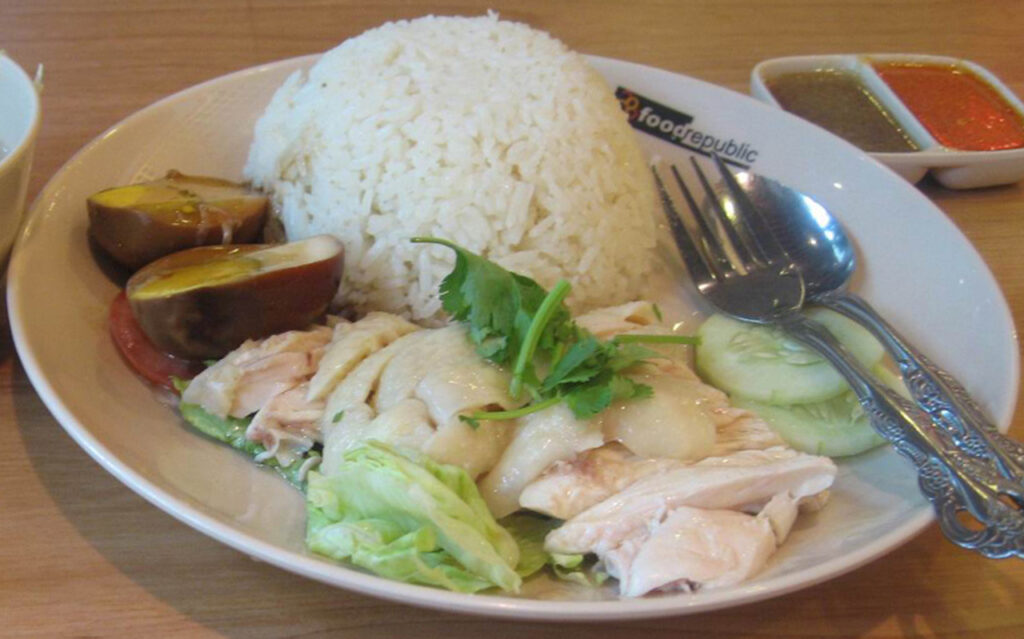
Tian Tian’s chicken rice is a study in restraint; poached chicken with glossy skin, rice cooked in chicken fat and aromatics, and a trio of sauces that make every bite sing. Bourdain singled out Tian Tian at Maxwell Food Centre for having rice so fragrant it can be eaten alone. The stall’s international acclaim and Michelin recognition keep long lines moving, but the reward is a simple plate executed with obsessive care, proof that hawker food can be both humble and exemplary.
10. Jerk Chicken, Jamaica
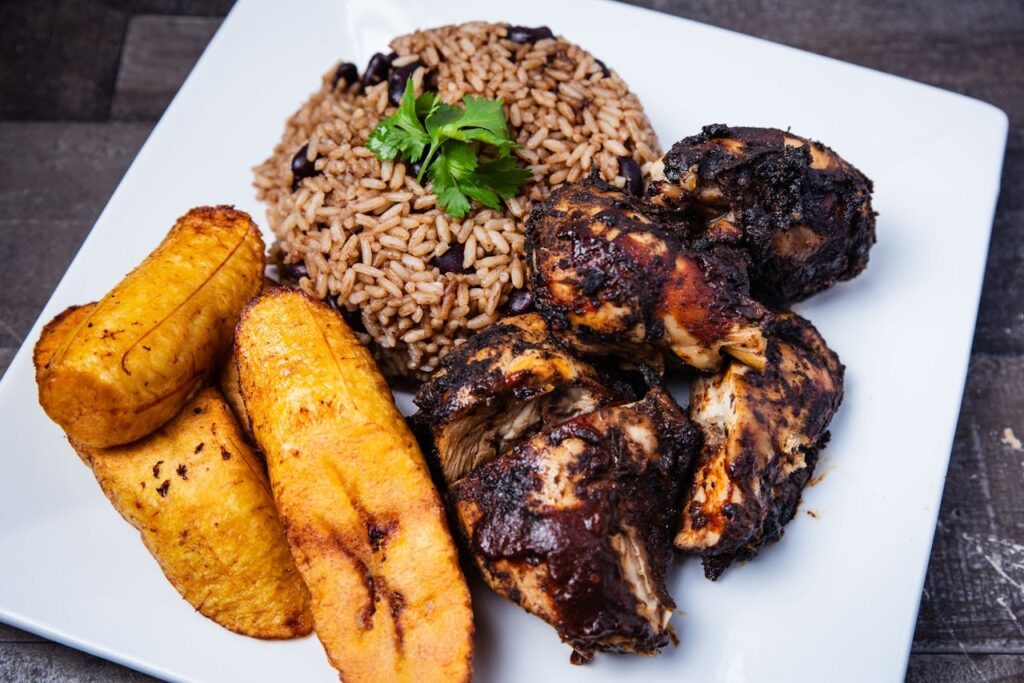
Jerk chicken is smoke, spice, and island sun on the plate: poultry marinated in a fiery mix of scotch bonnet, allspice, thyme, and scallion, then grilled over pimento wood for a smoky, charred finish. Bourdain chased genuine jerk stands in Port Antonio and Kingston, praising the dish’s regional variations and the way heat and smoke define its character. Seek roadside jerk centers and beach grills for the real thing; the texture, char, and peppery depth are nonnegotiable.
11. Mortadella Sandwich, São Paulo, Brazil
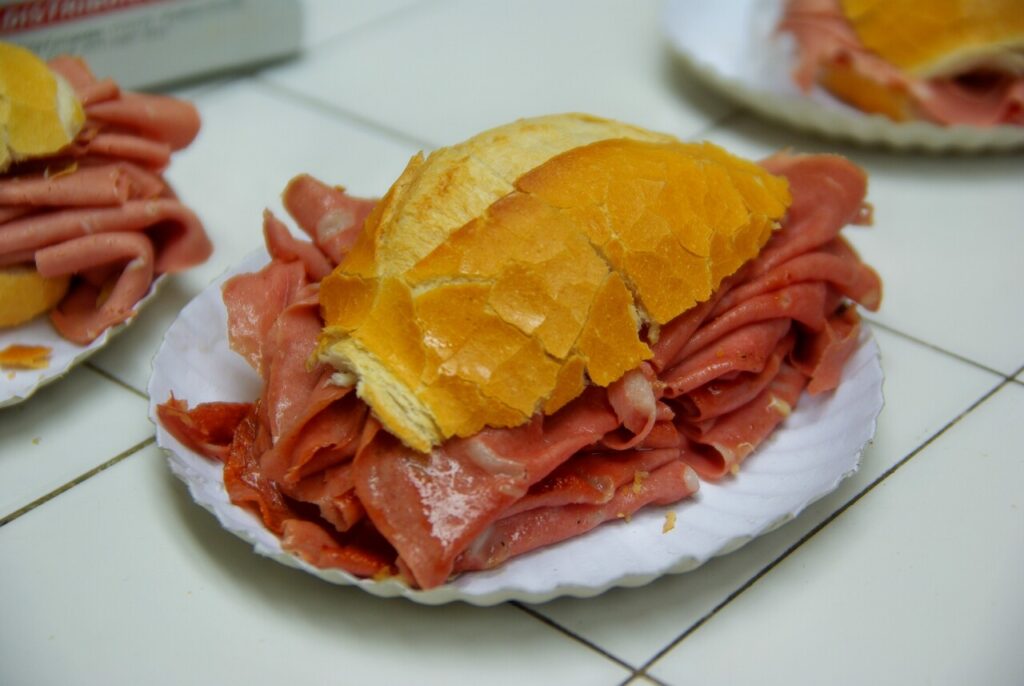
The mortadella sandwich at São Paulo’s municipal market is unapologetically generous: thick, hot slices of mortadella piled into a soft roll, sometimes finished with provolone or a quick toast. Bourdain loved its simplicity and scale, a working-class masterpiece that reads like a city in a sandwich. The Mercado Municipal Paulistano is the canonical place to try it, where vendors stack meat so high it becomes a rite of passage for visitors and locals alike.
12. Bánh mì, Hoi An, Vietnam
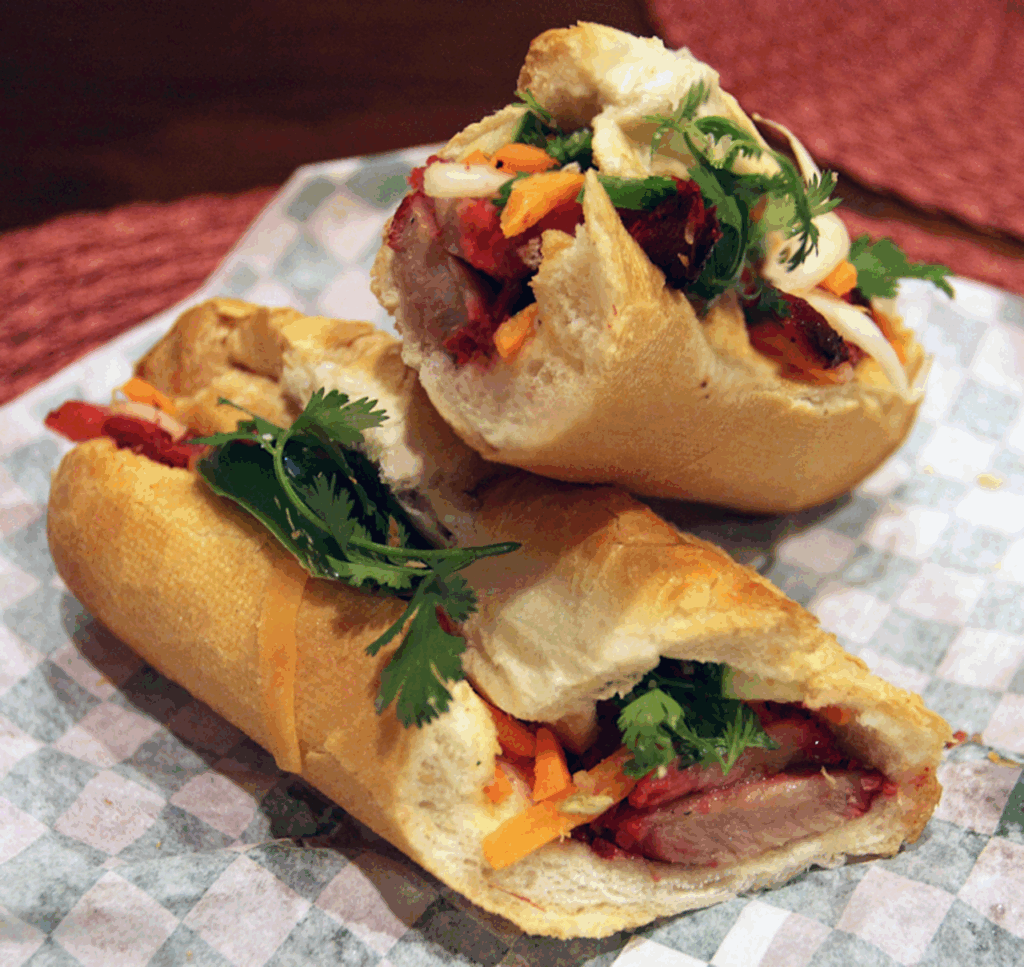
Hoi An’s bánh mì scene is small but intense, with shops like Bánh Mì Phượng known for crisp, crackling baguettes, balanced pickles, savory meats, and bright herbs. Bourdain praised Phượng as a pinnacle of the form of a sandwich that gets everything right: bread texture, proportion, and the little sauces that tie it together. In Hoi An, you often queue for these sandwiches because the formula is so reliably satisfying, and part of the pleasure is eating them on the move.
13. Anticuchos, Lima, Peru
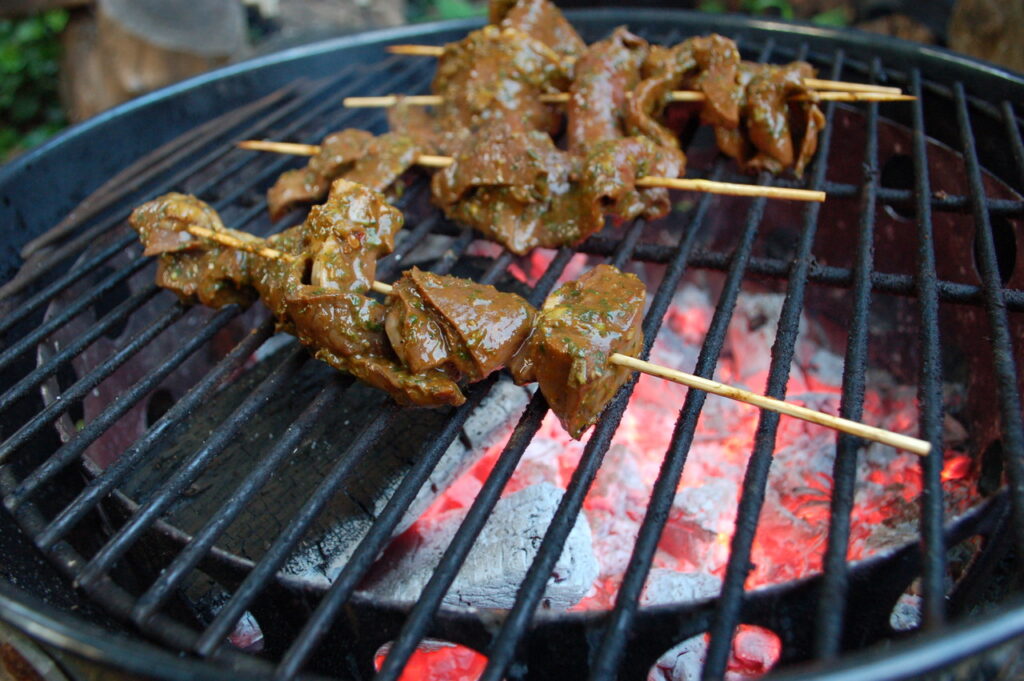
Anticuchos are skewers of marinated meat, often beef heart, grilled and served with spicy sauces and potatoes. They’re a cornerstone of Lima’s street heritage, smoky, piquant, and texturally compelling. Bourdain celebrated anticuchos for their civic role: late-night corners where workers and vendors gather over skewers and choros of sauce. In Lima’s markets and street-stand clusters, anticuchos are a test of flavor economy, just a few ingredients, but each one pushed to savory, smoky perfection.
